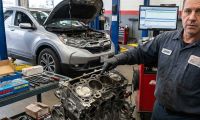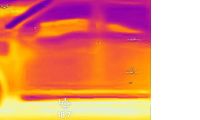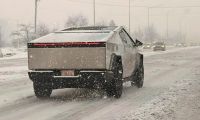In future software updates Tesla will modify the calculation of the remaining range in the batteries, with the addition of new parameters like, energy consumption, that might eventually have an influence. This seems to be deduced from the reading of the code of its software carried out by a well-known "green" hacker who in the past found functions that Tesla was preparing before its official announcement. In this case it seems that the software will take into account parameters like the tire pressure, the climate control system of the battery - before charging -, and even the recharging of a regular mobile phone.
The calculations of remaining range are actually complicated to carry out, both for electric cars and for internal combustion cars: the parameters that affect consumption are so many and so variable that errors in these algorithms can be considered as a common thing. However, it is very important for it to be as accurate as possible, in order to eliminate the famous range anxiety issue. Despite Tesla's software expertise, the system still makes some minor mistakes in energy consumption calculations during a trip; especially in winter, when environmental factors have a great influence and are quite difficult to quantify.
When entering a destination in the navigation system, the Tesla software system performs the relevant calculations in order to report the percentage of battery remaining at the end of the trip, and at the intermediate charging points. The route is calculated based on the actual recharging needs and includes the duration of the stop times in each one of them. It is basically software that offers the most complete information, since it uses information both from the car and that from Superchargers.

In 2018, Tesla already added factors as important as the topography (ascents and descents on the route) and some key factors of the local climate: all this helped the system to improve calculations, but it was still inaccurate, because it depends on many things like the speed at which you drive, the environmental conditions, the traffic conditions, and other parameters that finally influence efficiency. While these factors may seem like a very small percentage – almost unnoticeable - on some long trips, they can actually be significant; that is why Tesla continues to improve its algorithms by including more data and using it as conveniently as possible in order to refine the calculations.
Back in May this year (2022), Tesla added more weather-related parameters to estimate consumption: crosswind, headwind, humidity and ambient temperature; all these parameters calculated in real time according to local forecasts. Now - and according to information from a well-known "green" hacker who is a regular when it comes to gutting the code of Tesla's algorithms - new parameters are going to be included, that may be very important when it comes to offering a more exact figure in calculations.
Several items are added to the code that, although by themselves may not have a great influence on energy consumption, all together can affect the final result. One of them is the tire pressure, which up until now was not taken into account; however, it is widely known that under-inflated tires are actually way less efficient.

Another parameter - that strangely that was taken into account up until now - is the preheating and cooling of the battery before reaching a Supercharger: an operation that, especially in the case of very cold areas, entails significant energy consumption for the system and that from now on will become part of the calculation. Taking this consumption into account could eventually help solve the range calculation errors in winter that many Tesla owners have complained about.
wow 2022.20.7 seems to go into insane details to improve range predictions.
Even tire pressure is taken into account (amongst many-many other extra variables just added). Also takes into account energy loss to phone charging and 12V accessories, air density, battery heat/cool,...— green (@greentheonly) July 26, 2022
Finally, an apparently insignificant factor - that actually should have very little importance - is for the system to take into account whether or not a mobile phone is being charged on board. All these changes are released as part of Tesla's 2022.20.7 software update that is being gradually rolled out to Teslas on the road via OTA updates.
All images courtesy of Tesla Inc.
Nico Caballero is the VP of Finance of Cogency Power, specializing in solar energy. He also holds a Diploma in Electric Cars from Delft University of Technology in the Netherlands, and enjoys doing research about Tesla and EV batteries. He can be reached at @NicoTorqueNews on Twitter. Nico covers Tesla and electric vehicle latest happenings at Torque News.











